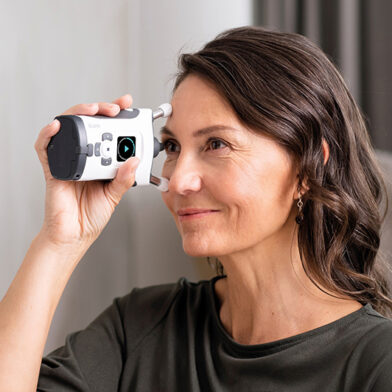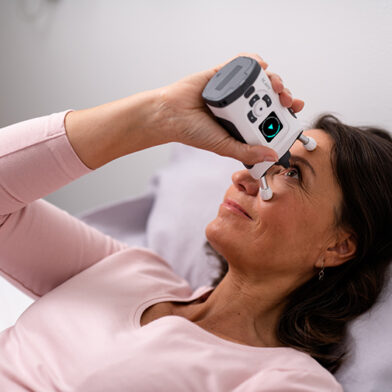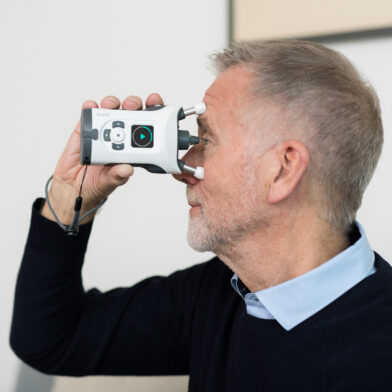“I am a doctor and a glaucoma patient. Using the iCare HOME tonometer to check my eye pressure outside of my quarterly doctor visits, gives me peace of mind.”


It is estimated that 80 million people globally are living with glaucoma
What is glaucoma?
Glaucoma is a chronic, progressive disease of the optic nerve which can eventually lead to severe visual impairment and even blindness.
Glaucoma is often completely asymptomatic in its initial stages — as glaucoma progresses, the individual may start to realize that it is getting difficult to see clearly in one or both eyes. Due to the initial lack of symptoms, it’s estimated that only 50% of glaucoma sufferers are aware that they have the disease.

Who is at risk of glaucoma?
The cause of glaucoma is still unknown, but several risk factors have been identified. Elevated intraocular pressure is one underlying risk factor for glaucoma that can be treated.

Age is a big factor too — glaucoma is rarely diagnosed in people younger than 40. The incidence of glaucoma increases with age with 2% of people over the age of 50, and 5% of people over the age of 75 living with the condition. Having close family members diagnosed with glaucoma increases the risk of having the disease three-to-nine fold. Other risk factors include severe myopia (nearsightedness) or severe hyperopia (farsightedness), and thin corneas.
Understanding your intraocular pressure
Elevated eye pressure is the only modifiable risk factor for glaucoma. An intraocular pressure between 10 and 21 mmHg is considered normal. If the intraocular pressure is in the range of 22–29 mmHg, the risk of glaucoma is ten-fold, compared to the risk for eyes with pressure in the normal range. If the intraocular pressure rises into the range of 30–35 mmHg, the risk of glaucoma increases 40-fold.
Elevated intraocular pressure is likely to cause glaucoma in two ways. Firstly, by direct pressure exerted on the fibers of the optic nerve. Secondly, by adversely affecting the blood flow in the head of the optic nerve and its metabolism.
If you have had a high reading from an intraocular pressure measurement, it is advisable to consult an ophthalmologist.
In addition to elevated intraocular pressure, variation in intraocular pressure may also be associated with glaucoma. In healthy eyes, the variation in intraocular pressure is low, but in glaucoma, it may be significant. Peaks in intraocular pressure can occur at any time of the day or night.
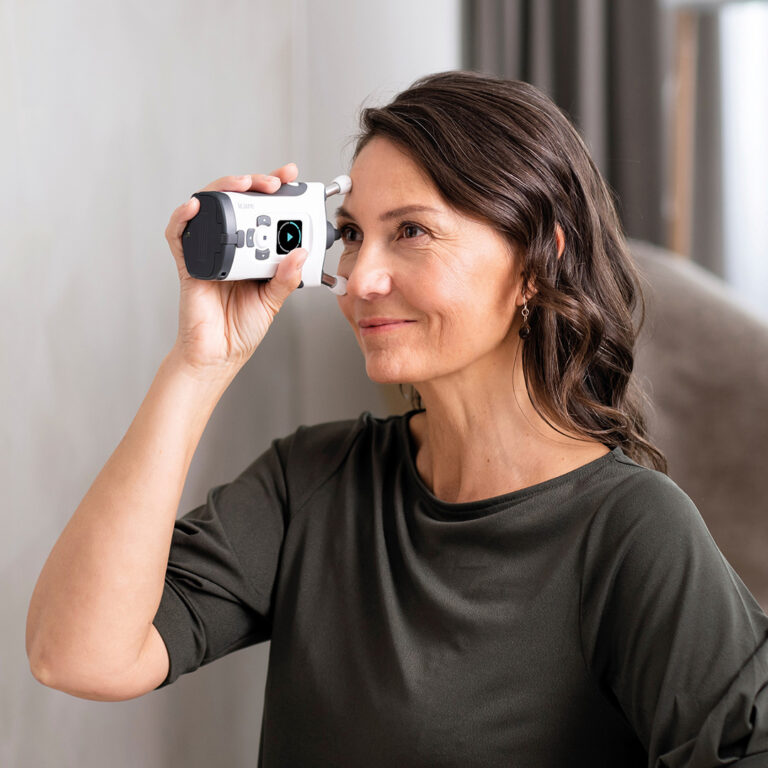
Why are frequent IOP measurements crucial to glaucoma care?
Currently, lowering intraocular pressure is the only treatment for glaucoma. The primary objective of glaucoma therapy is to prevent glaucoma-induced visual impairment. Treatment of the disease is based on reducing IOP, regardless of the base level. The normal goal is to lower IOP by 20–30% or at least lower it to a level below 20 mmHg.
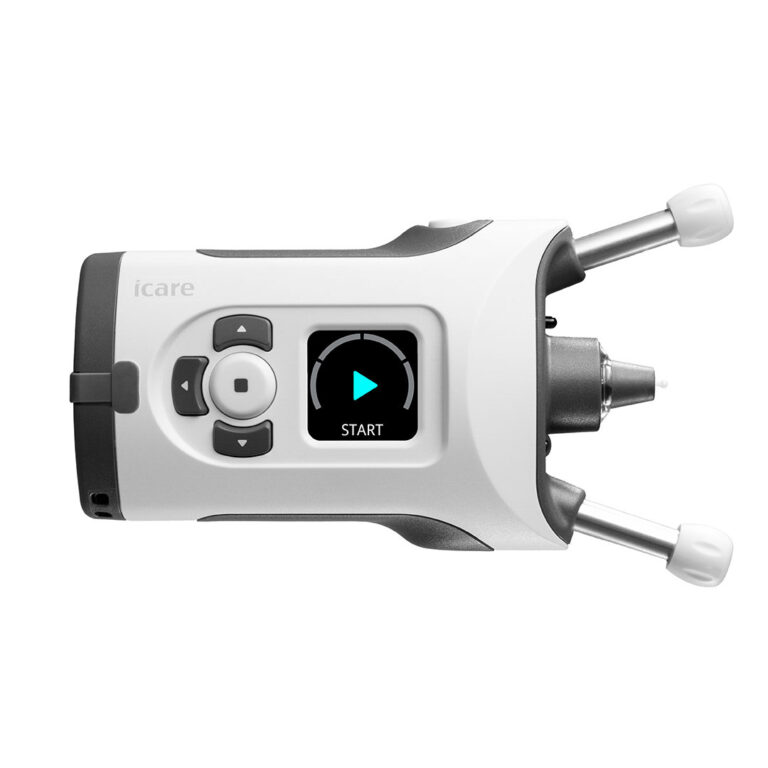
The most common treatment for glaucoma is the use of eye drop medication. The effectiveness of the medication is assessed by monitoring the reduction in eye pressure, imaging the optic nerve head and nerve fibers, as well as testing the visual field. If medication is not suitable or is ineffective, laser or surgical treatment may be considered.
Regular measurement of intraocular pressure is an important factor for the early detection of glaucoma. The prognosis for glaucoma is generally good if the disease is detected early and the patient adheres to treatment and follow-up. The greatest risk of visual impairment comes with delayed detection of glaucoma.
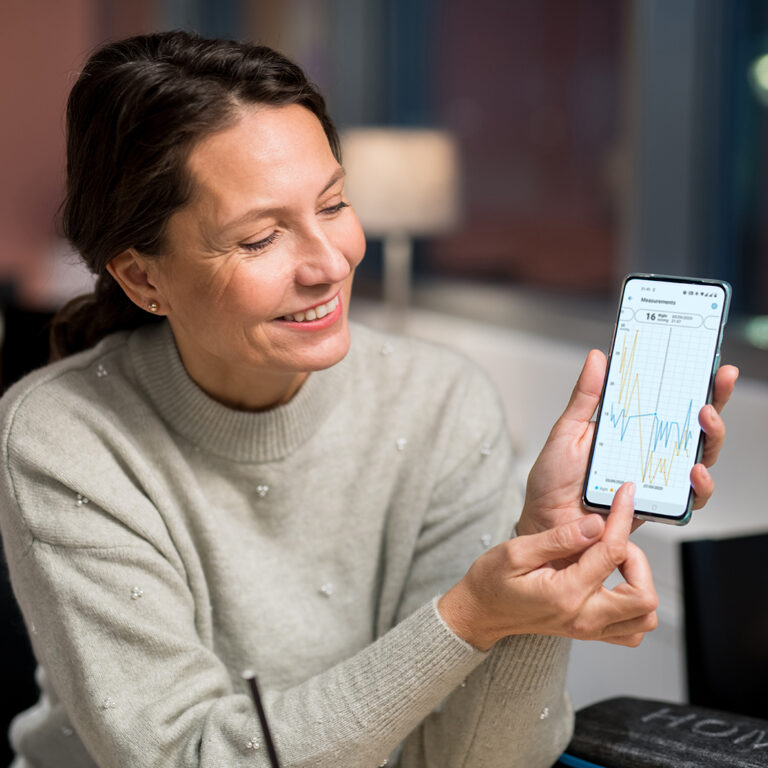
Intraocular pressure can vary throughout the day and night and on different days, especially in glaucomatous eyes. Therefore, there is a high probability of missing important IOP peaks if only sporadic IOP measurements are taken during office hours. With the iCare HOME2, you can be sure that your doctor has access to all the important information to help them make timely decisions based on ample, real-world data.
The information on this site is sourced from: glaucomapatients.org, and glaucoma.org published by the Glaucoma Research Foundation and the World Glaucoma Association.
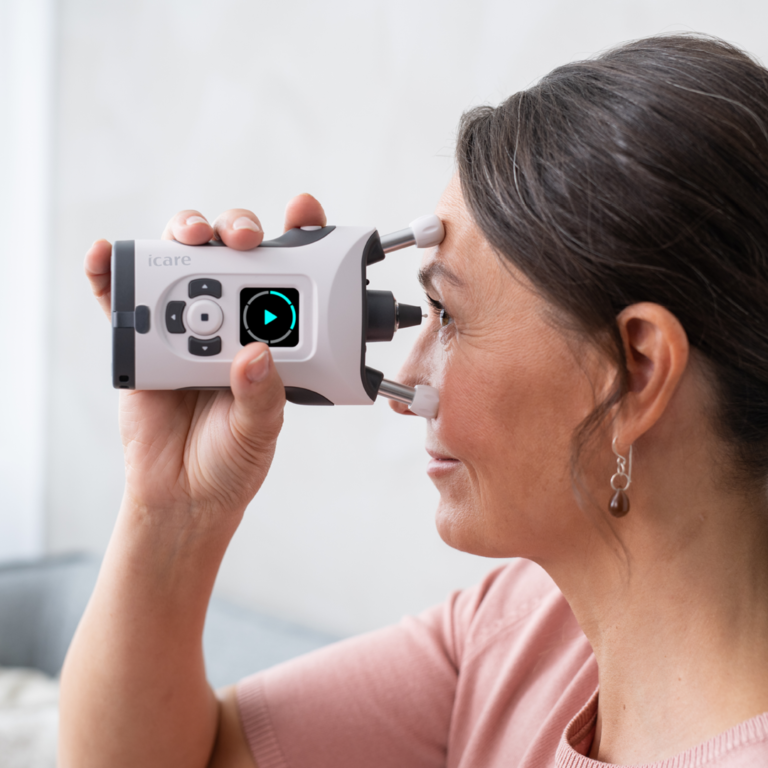
iCare HOME2
• Advanced tonometry technology for accurate results
• Ergonomic design with adjustable forehead and cheek support
• Device that requires no calibration and minimum maintenance
• Smart light guide and screen that assists you with measurements
• Accurate measurement error detection
• Compact, lightweight, and travel-friendly device with a custom-designed case

Print the iCare HOME2 leaflet with you to give to your doctor
Download the leafletFAQ
-
What is eye pressure?
Eye pressure, also known as intraocular pressure (IOP), refers to the fluid pressure within the eye.
Learn more about IOP here: Everything you need to know about the iCare HOME2 – iCare Patients (icare-world.com)
-
Is it normal for my eye pressure to fluctuate?
Yes, IOP fluctuates in healthy eyes, and even more so in glaucoma eyes. The fluctuations are due to various factors, such as cortisol levels, stress, and exercise. IOP is typically highest in the early morning.
Lear more about: IOP monitoring with the iCare HOME2 tonometer – An interview with Dr. Barbara Wirostko on Vimeo
-
What is the significance of IOP fluctuations in glaucoma?
Besides high IOP values, IOP fluctuations can be a risk factor for glaucoma progression.
Learn more about: IOP monitoring with the iCare HOME2 tonometer – An interview with Dr. Barbara Wirostko on Vimeo
-
Why should I measure my eye pressure at home?
There is a high probability of missing IOP peaks and fluctuations if IOP is only measured sporadically, during clinical visits. Monitoring your IOP over an extended period can provide valuable information for your doctor, enabling them to make more informed decisions about potential treatment options.
Learn more about: Self-tonometry provides invaluable insights into IOP fluctuations – iCare Patients (icare-world.com)
-
When should I be concerned about my eye pressure readings?
Please discuss your eye pressure readings with your eye care professional, as glaucoma can vary significantly between individuals.
-
What is a home tonometer?
The iCare HOME2 is a tonometer that enables you to measure your eye pressure at home, outside of the clinical setting. It provides a complete picture of IOP peaks and fluctuations, giving your doctor valuable information for personalized treatment decisions.
-
What technology is iCare HOME2 based on?
The iCare HOME2 uses the same rebound technology that is used in iCare’s professional tonometers, or more than 20 years.
-
How does iCare HOME2 work?
The iCare HOME2 uses a lightweight, sterile probe that briefly touches the cornea. Six measurements in a row are taken to produce an IOP reading. Usually, no sensation is felt.
-
Is iCare HOME2 accurate?
Yes, the accuracy of iCare HOME tonometers has been proven in several clinical studies.
For more information, please refer to the iCare HOME2 manual: Instructions – iCare HOME2 tonometer – iCare Patients (icare-world.com)
-
What are the common causes of not getting a reading?
The iCare HOME2 shows messages on the screen to help you get an accurate measurement. The most common causes for not getting a reading include
- The measurement distance is not correct; the probe tip may be too far from or too near to the eye
- The probe is not perpendicular, horizontally or vertically, to the eye
- Blinking; the probe touches the eyelid or the eyelashes
- Taking too long to take the six measurements or not clearing the errors between measurements
Patient testimonials
-
-
”The iCare HOME saved my sight. After taking my eye pressure at home, the
doctor changed my treatment plan, which slowed my glaucoma progression.” -
”I started using the iCare HOME just in time to save vision in my right eye, I wish I had access sooner for my left eye.”
Related articles
-
Where to buy?
Local qualified iCare retailers are ready to help you with all matters related to iCare products and services. Click to see your local retailer.
More information -
Subscribe to our newsletter
Click here
